In 2022, we have been twice in this Michelin three-star restaurant near Reims, in the Champagne region. I have also celebrated my birthday there, pairing 2015 La Tâche with fallow deer fillet and pigeon pie with foie gras. My biggest disappointment was the pie. Apparently, it is a dish created by the father of the current chef, Mr. Arnaud Lallement. This dish reminded me of the strongest period in high end French cuisine before the about turn to a lighter cuisine inspired by modern trends in Spain, Scandinavia, and Japan. On my first trip to this restaurant, my wife and I had a half portion of a pie each and loved it. So, the second time we ordered one whole each, but we were still served half of the pie each. This is because most three-star restaurants today operate like sophisticated conveyor belts, which minimize error at the expense of tailoring to the clients’ particular needs. For the sake of consistency and cost minimization, gastronomic restaurants churn out degustation menus. The pigeon pie turned out to be in the degustation menu and no matter what you want you will get a half portion as the sous chef in the assembly line is expected to maximize efficiency. This is the same fate that has befallen the amazing signature baked pasta dish at Le Cinq restaurant. The portion is half size compared to what used to be served at the chef LeSquer’s old restaurant, Ledoyen, as this dish is now offered in the degustation menu.
The pie is stuffed with precisely cooked pigeon breast and foie gras. The spinach between the crust and pigeon fillet ensures that the meat is kept moist. The crust is buttery, flaky, and not soggy. The red wine-based sauce, which is enriched by pigeon offals, is very rich and a good foil for the foie gras that keeps its texture inside the pie. The baked turnip and the confit tomato served with the pie are stuffed with the pigeon thigh cooked to perfection. This is a great dish.
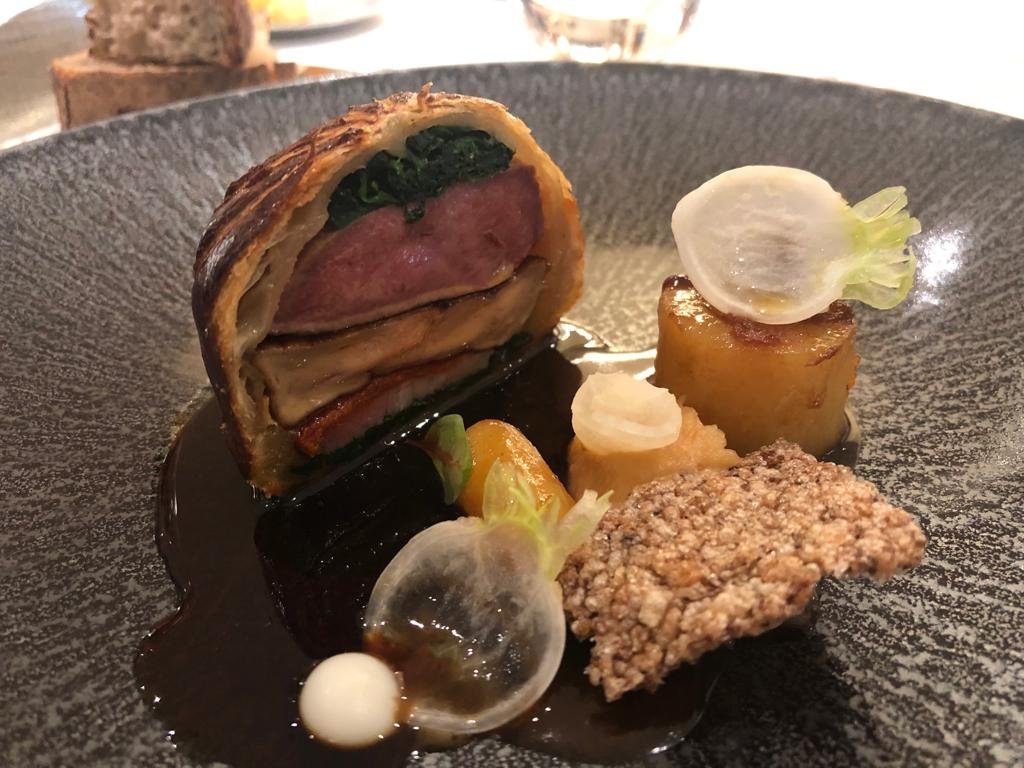
There is another great dish of a very different sort. It is actually served as an amuse. It comes after the nice little tarts and fritters that accompany our glasses of champagne at the very beginning of the meal. The second amuse is actually more than a tidbit; it is like a full portion first course. It is called “ruche de notre parc” in French or “beehive in our park”. The chef created this dish, which is composed of beeswax, pollen, propolis, and agrumes, like orange and grapefruit. Apparently, they have bees in their garden-park, and they make their own honey. The honey comes in different textures, like creamy, foamy, dehydrated, crisp, waxy. I cannot tell which component of the honey got transformed to each texture, but I can say that it is a multi-layered and rich but not a cloying dish. The agrumes’ aroma and flavor that they integrated into the honey balance the sweetness by imparting bitter acidity and freshness. Chef Fatih Tutak, the only two-star Michelin testaurant in Istanbul’s Turk restaurant, also serves honey as an amuse, but the sweetness and cloying sensation compromises our taste buds in the beginning of the meal. Here “the beehive” titillates our taste buds. I will call this the best amuse I have had last year.
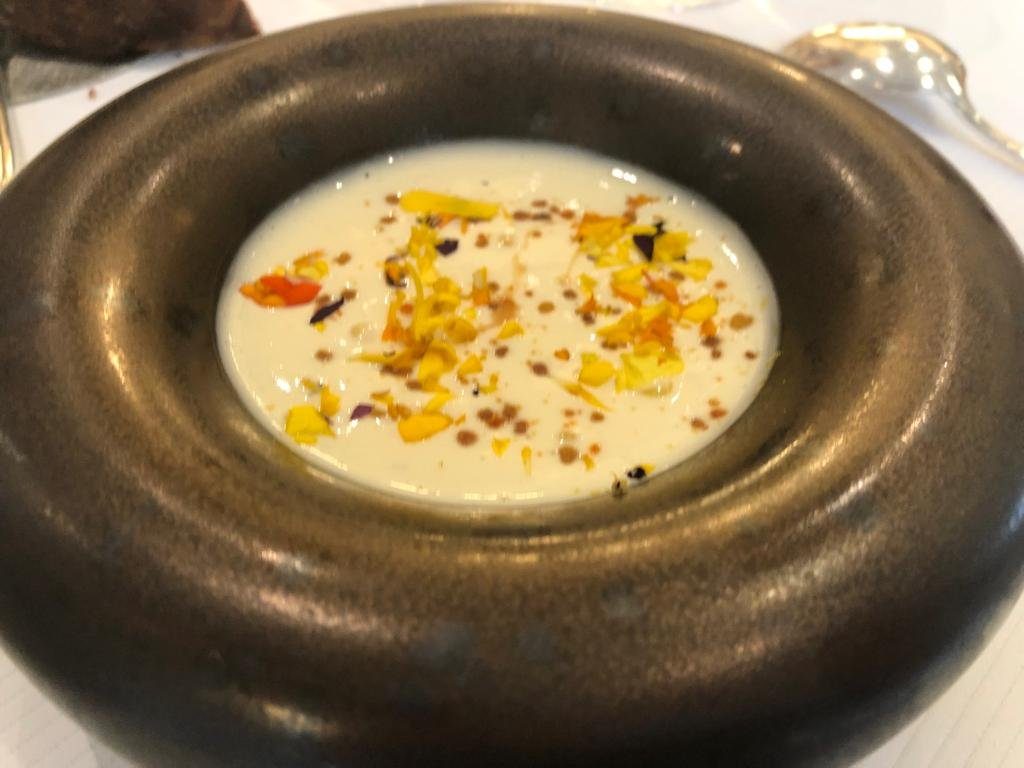
The rest of the dishes we have tried in the two visits were all good to very good, but not as memorable. The kitchen cooks the game dishes very precisely. We tried “biche” or fallow dear twice with Alba truffles. It was served with a light jus, onion rings, and rhubarb. I thought the jus and the garnishes were a little too simple. The Alba truffles were wasted in the dish as the game meat is too strong to showcase the complex taste of the pico magnatum. I would have preferred more earthy and also sweet components, such as chestnuts, celery root puree, apple puree, cranberries, etc. Sometimes tradition bound classic preparations are the best.
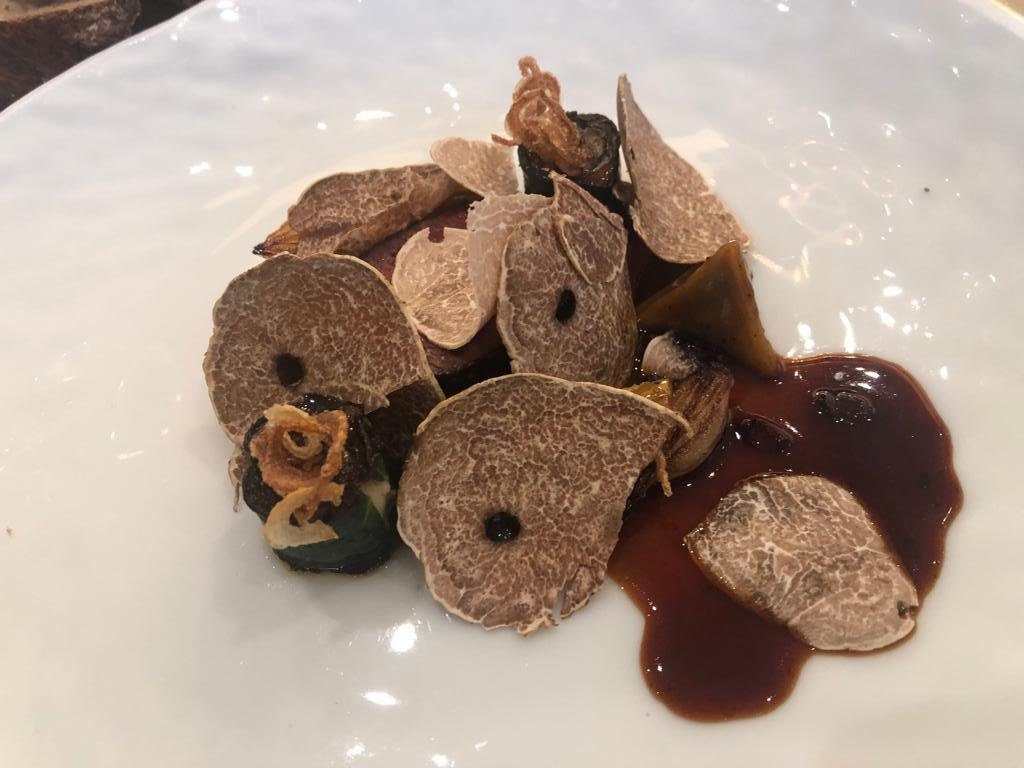
We also tried gnocchi with Alba truffles. The combination worked, but they have to work on the gnocchi technique to render them more light and feathery, like one finds in good Italian restaurants.
Both the scallops and the turbot fillet, which was cut from the bone of a 12 kg. turbot, were cooked à la plancha. The sauces and garnishes were very good. Allemand is an excellent saucier and his “vin jaune” sauce with the turbot, which was enriched by cooking the bones to get the gelatin, and his light buttery infusion with lardo, that was served in a separate bowl with the scallops, were both excellent. The young green cabbage filled with tripe served with the scallops, and the young leeks with the turbot, were also top notch ingredients. Yet, both of these dishes fell short of greatness because they were a tad over-cooked. Unfortunately, this is a problem with the majority of French restaurants. They cook seafood beyond the optimum point.
I liked the blue lobster though. The lobster dish is dedicated to the chef’s father, and the lobster is perfectly cooked with an intense but not overly reduced sauce which contains lobster head, wine, and herbs, such as thyme and sage.
We also thought highly of their cheese selection from Philippe Olivier, as well as the local crusty bread. The desserts we tried in our first visit were adequate, but neither the variation on Piedmont hazelnuts, nor the chocolate dessert made a strong impression. The gourmandizes, like little fruit tarts, nougat, chocolate truffles, lollipop, etc., that came with our coffee, were quite satisfactory though.
EVALUATION: 17.5/20
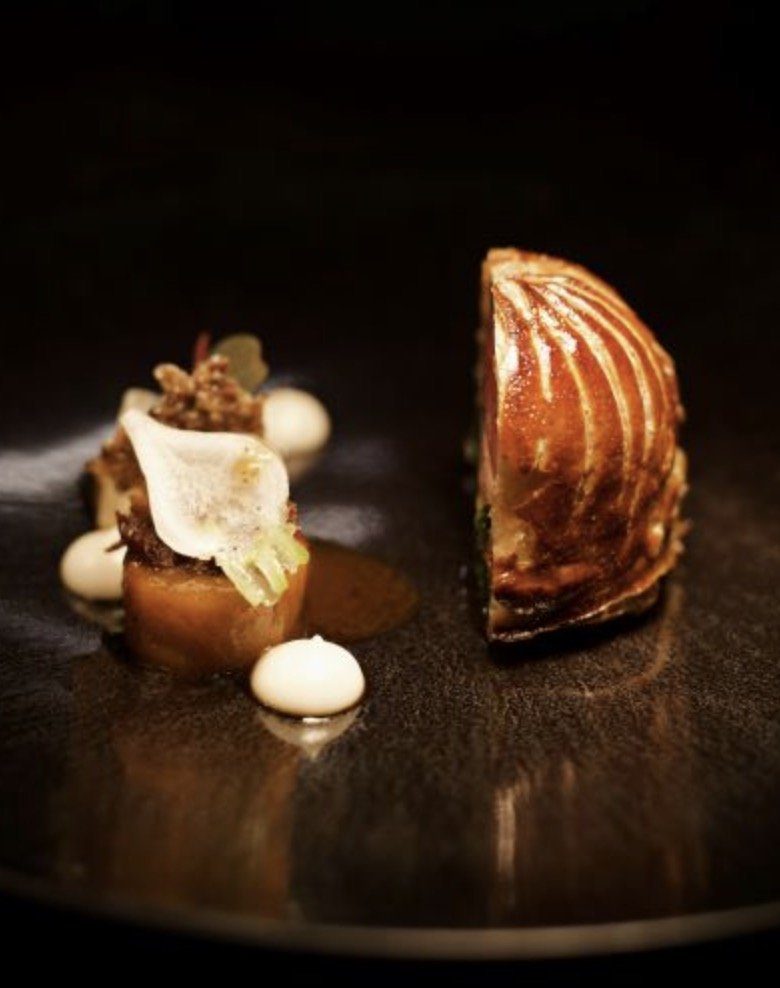
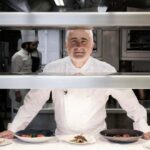
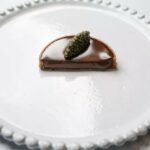
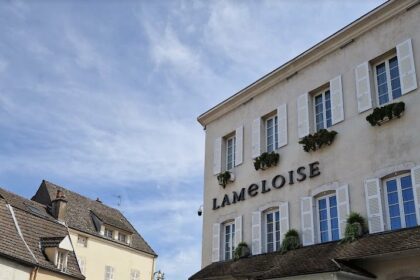
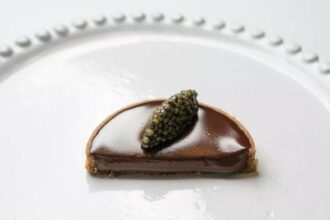
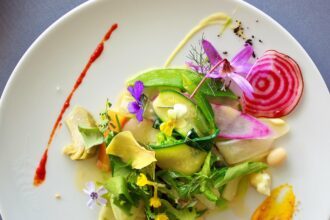
Overcooked fish is a plague at most restaurants but even worse with fine dining menus…